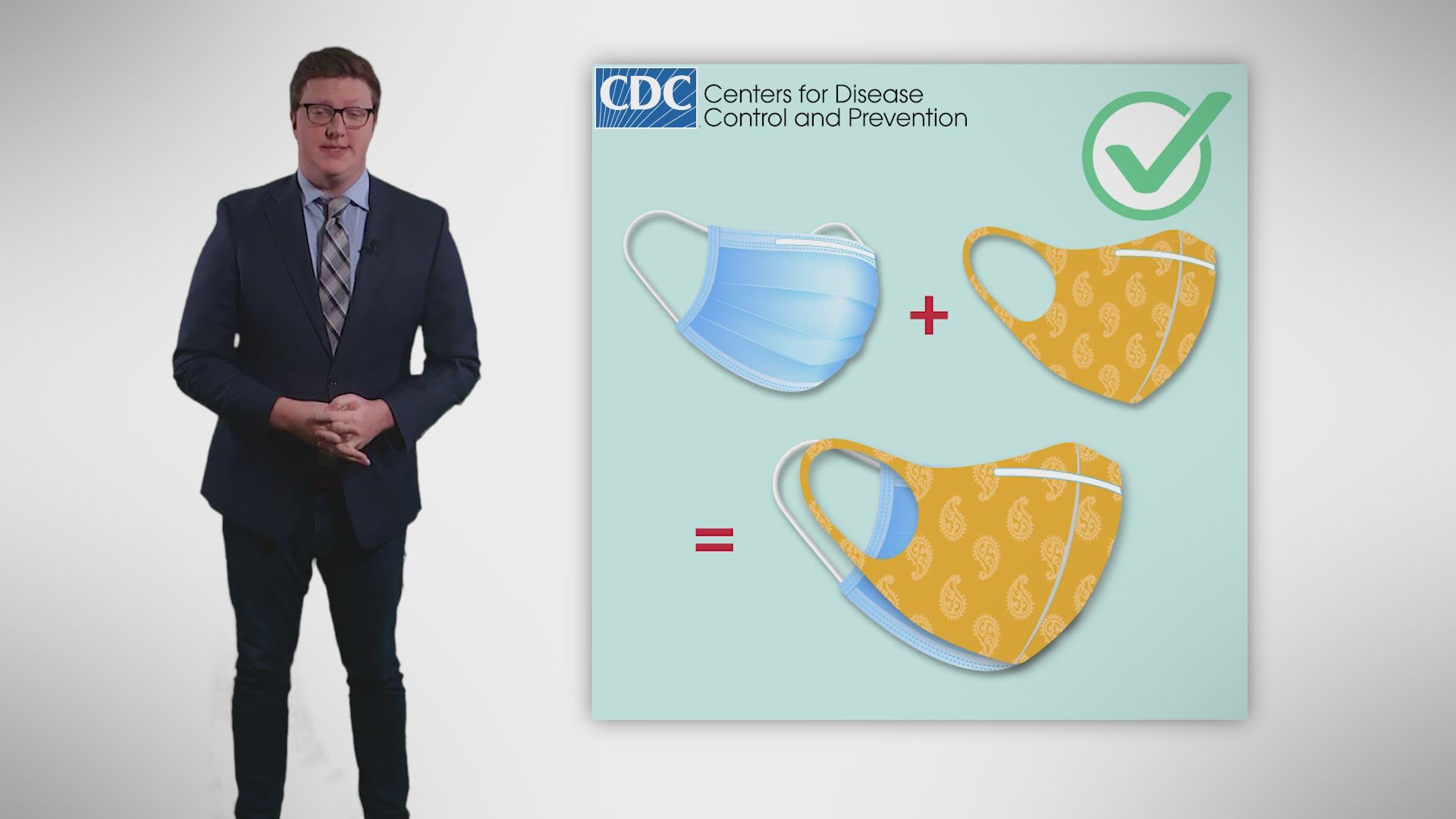Double masking -- the wearing of two masks at once instead of just one -- has gained increased attention in recent weeks. Medical experts have argued that it should be worthwhile and figures at public events such as President Joe Biden’s inauguration have worn two masks simultaneously. But only recently has it become a public policy recommendation.
THE QUESTION
Is wearing two masks better than wearing one to prevent getting COVID-19?
THE ANSWER
Yes. The Centers for Disease Control and Prevention just changed its guidance to urge people to double-mask. And it urges the use of mask fitters or braces to ensure a tight fit. The CDC has also noted that the use of cloth masks with multiple layers of fabric is an alternative way you can achieve the effect of wearing two masks.
WHY WE ARE VERIFYING
As many Americans await vaccination against the coronavirus, they are unsure of how best to use masks to prevent getting infected.
WHAT WE FOUND
The CDC issued new guidance this week saying that doubling up on masks could reduce the chance of getting infected with COVID-19 by up to 95%, based on lab tests. But that depends on others around you also wearing double masks.
The key is wearing the right combination of masks -- a disposable surgical mask with a cloth mask over it or a cloth mask with multiple layers of fabric -- and having a tight fit to keep virus particles out, the CDC says.
It specifically tells people that they should not wear two disposable masks on top of each other or combine a KN95 mask with another type of mask. That’s because disposable masks are not designed to fit tightly, meaning a disposable mask on the outer layer will not improve the fit of the one on the inner layer. As for KN95 masks, you’re only supposed to use one at a time.
The CDC urges people to use a mask with a nose wire, the bendable metal strip that helps a mask fit more snugly. Additionally, it recommends wearing a mask fitter or brace over the masks to ensure a better fit along the edges. Two recent studies show that mask fitters can increase a wearer’s protection against aerosols the size of COVID-19 particles by at least 90%, the CDC says.
Also be sure to knot the ear loops correctly, utilizing the "knot and tuck" method. That's when you make knots in the ear loops and then tuck the excess fabric in for a tighter fitting mask. In experiments, the CDC found that an unknotted medical mask worn alone blocked only 42% of particles and a cloth mask blocked 44.3% of particles from a simulated cough. On its website, the CDC includes a video from UNC Health showing the tricks to properly tying the knots.
The CDC says that when wearing two masks, the second mask should push the edges of the inner mask against your face. It also says wearing a cloth mask with multiple layers of fabric is an acceptable way of achieving the layered effect of wearing two masks.
It’s important that you’re able to see and breathe easily when wearing your mask. So when choosing between wearing two masks or one mask with multiple layers, make sure to pick the option that won’t force you to take off your mask or masks to be able to see or breathe. That defeats the purpose.
Something you’d like VERIFIED? Click here to submit your story.

